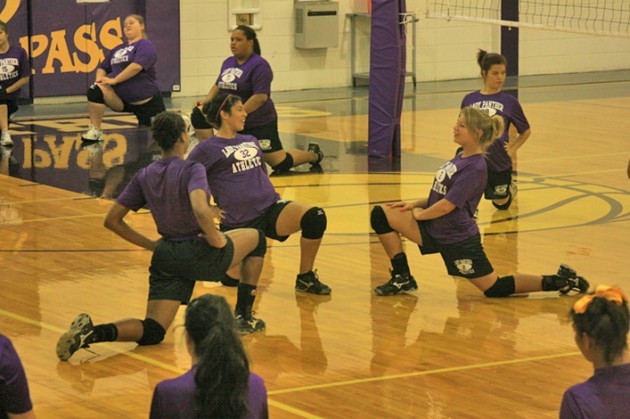
volleyball stretches
Not so fast. Although studies about the benefits of stretching are mixed, stretching may help you improve your flexibility, which in turn may improve your athletic performance and decrease your risk of injury. Understand why stretching can help — and how to stretch correctly.
Benefits of stretching
Studies about the benefits of stretching have had mixed results. Some show that stretching helps, while others show that stretching has little if any benefit. The main benefits of stretching are thought to be:
Improving athletic performance
Decreasing the risk of activity-based injuries
Stretching can help improve flexibility. And better flexibility may improve your performance in physical activities or decrease your risk of injuries by helping your joints move through their full range of motion. For instance, say your Achilles tendon is tight and lacks flexibility. If you do a lot of hill walking, your foot may not move through its full range of motion. Over time, this can increase your risk of tendinitis or tendinopathy in your Achilles tendon. Stretching your Achilles tendon, though, may improve the range of motion in your ankle. This, in turn, can decrease the risk of microtrauma to your tendon that can lead to overload and injury.
Stretching also increases blood flow to the muscle. And you may come to enjoy the ritual of stretching before — or better yet, after — hitting the trail, ballet floor or soccer field.
Stretching essentials
Before you plunge into stretching, make sure you do it safely and effectively. While you can stretch anytime, anywhere — in your home, at work, in a hotel room or at the park — you want to be sure to use proper technique. Stretching incorrectly can actually do more harm than good.
Use these tips to keep stretching safe:
Don’t consider stretching a warm-up. You may hurt yourself if you stretch cold muscles. So before stretching, warm up with light walking, jogging or biking at low intensity for five to 10 minutes. Or better yet, stretch after you exercise when your muscles are warmed up. Also, consider holding off on stretching before an intense activity, such as sprinting or track and field activities. Some research suggests that pre-event stretching before these types of events may actually decrease performance.
Focus on major muscle groups. When you’re stretching, focus on your calves, thighs, hips, lower back, neck and shoulders. Also stretch muscles and joints that you routinely use at work or play. And make sure that you stretch both sides. For instance, if you stretch your left hamstring, be sure to stretch your right hamstring, too.
Don’t bounce. Bouncing as you stretch can cause small tears in the muscle. These tears leave scar tissue as the muscle heals, which tightens the muscle even further, making you less flexible and more prone to pain. So, hold each stretch for about 30 seconds. Repeat each stretch three or four times.
Don’t aim for pain. Expect to feel tension while you’re stretching, not pain. If it hurts, you’ve pushed too far. Back off to the point where you don’t feel any pain, then hold the stretch.
Make stretches sport specific. Some evidence suggests that it’s helpful to do stretches tailored for your sport or activity. If you play soccer, for instance, you’re more vulnerable to hamstring strains. So opt for stretches that help your hamstrings.
Keep up with your stretching. Stretching can be time-consuming. But you can achieve the best benefits by stretching regularly, at least two to three times a week. If you don’t stretch regularly, you risk losing any benefits that stretching offered. For instance, if stretching helped you increase your range of motion, and you stop stretching, your range of motion may decrease again.
Bring movement into your stretching. Gentle movement can help you be more flexible in specific movements. The gentle movements of tai chi, for instance, may be a good way to stretch. And if you’re going to perform a specific activity, such as a front kick in martial arts, do the move slowly and at low intensity at first to get your muscles used to it. Then speed up gradually as your muscles become accustomed to the motion.
Know when to exercise caution
In some cases, you may need to approach stretching with caution. If you have a chronic condition or an injury, you may need to adjust your stretching techniques. For example, if you already have a strained muscle, stretching it may cause further harm.
Also, don’t think that because you stretch you can’t get injured. Stretching, for instance, won’t prevent an overuse injury. Talk to your doctor or physical therapist about the best way to stretch if you have any health concerns.
For more fun volleyball news click here.
Check out the news from our Phisiotherapy section, every Monday a new story! Tomorrow read about Uses and Benefits of an Exercise Disc Balance Cushion